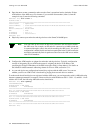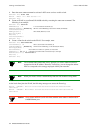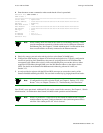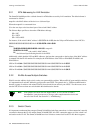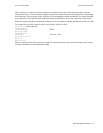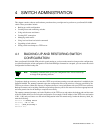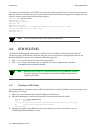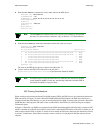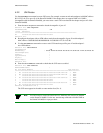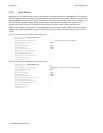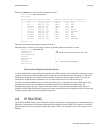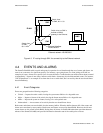
4-2 SmartCell 6A000 User Guide
ATM Routing Switch Administration
The switch stores the IP address of the TFTP server, the path, and the backup file name. The next time you enter the
backup
or restore commands, these values are presented as the default IP address and path. For example, when you
enter the
restore command, the following display appears:
SmartCell ZX# restore switch
ServerIP(90.1.1.100) :
Path(/back_dir/config-1) :
SmartCell ZX #
Backup file is valid.
Restoring a backup file will completely replace any data stored in the flash.
Are you sure this is what you want to do?
Confirm(y/n)?: y
SmartCell ZX #
Note You must reboot the switch for the restore to take effect.
4.2 ATM ROUTING
The SmartCell 6A000 default routing protocol is PNNI version 1.0. PNNI provides automatic and dynamic
connectivity among all PNNI nodes within the same peer group. For purposes of interoperability, however, the
SmartCell 6A000 also supports these additional ATM routing protocols:
•
IISP — Use to connect with devices that do not support PNNI
•
UNI — Use to connect end stations (also to connect devices whose implementation of ILMI is
incompatible with the SmartCell 6A000)
Note Both IISP and UNI routes are created and modified using the ATMRoute command.
The proper route type is determined by the SmartCell 6A000 through interface
signaling information.
4.2.1 Creating an IISP Route
Use the add ATMRoute command to create an IISP route that links the SmartCell 6A000 to a device that supports only
IISP routing. For example,
1. Physically connect port b2 of the SmartCell 6A000 to the IISP device.
2. Enter show NetPrefix to determine the net prefix of port b2 on the SmartCell 6A000:
SmartCell ZX # show netprefix b2
Port NetPrefix
==============================================================================
B2 39:00:00:00:00:00:00:00:00:00:14:41:80
SmartCell ZX #
3. Determine the address of the IISP device. (For this example, this could be a port address, we use
52:00:00:00:00:00:00:00:00:00:14:51:80)



